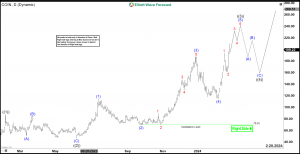The global shift toward sustainable practices has created a substantial market for eco-friendly packaging. Forecasts suggest that this market will expand from USD 256.06 billion in 2025 to USD 369.32 billion by 2030, driven by increasing consumer awareness and government interventions. The demand for eco-friendly packaging is growing as industries pivot to meet environmental standards and consumer expectations. However, a recent survey indicates that most U.S. consumers lack a clear understanding of which packaging materials are the most sustainable. Compostable and plant-based materials are perceived as the most eco-friendly, but other options are also gaining recognition.
Key Market Drivers of Eco-Friendly Packaging
- Government Initiatives and Regulations Encouraging Sustainable Packaging
To combat pollution and waste, governments worldwide are implementing policies to promote eco-friendly packaging solutions. These regulations are influential drivers of the eco-friendly packaging market, encouraging the use of recyclable, compostable, and biodegradable materials. For instance:
- Single-Use Plastic Bans: Countries around the globe have introduced bans on single-use plastics like bags, straws, and cutlery. These policies not only minimize plastic waste but also foster a need for alternative packaging materials.
- Incentives for Sustainable Solutions: Financial incentives, including subsidies and tax benefits, motivate companies to invest in green technologies. By offering financial rewards, governments can reduce the cost burden on businesses transitioning to sustainable packaging.
- PM Formalization of Micro Food Processing Enterprises (PMFME): The Government of India launched the PMFME scheme with a financial outlay of INR 10,000 Cr over five years (2020-2025) to support micro food processing enterprises in upgrading to sustainable practices. As of now, over 43,000 enterprises have received assistance under this scheme.
- Consumer Demand for Eco-Friendly Products
Modern consumers are increasingly prioritizing sustainability. Studies show that eco-conscious consumers are willing to pay more for products packaged in environmentally friendly materials. Key areas of consumer interest include:
- Compostable and Biodegradable Packaging: According to recent research, 73% of U.S. consumers view compostable products as highly sustainable, while 71% see plant-based packaging in the same light. These materials are popular because they break down naturally, leaving minimal environmental impact.
- Renewable and Plant-Based Packaging: As consumers become more informed, materials derived from renewable resources, such as cornstarch, bamboo, and sugarcane, are gaining traction.
- Minimalistic Packaging Designs: In response to growing environmental concerns, companies are designing packaging that reduces waste. Minimalistic packaging uses fewer materials, generating less waste while still serving its protective function.
Challenges and Restraints in the Eco-Friendly Packaging Market
Despite significant growth, the eco-friendly packaging market faces challenges, primarily due to higher production costs and limited access to sustainable raw materials.
- High Production Costs for Sustainable Materials
Creating eco-friendly packaging often requires alternative raw materials and processes that can be more expensive than conventional plastic production. For example:
- Material Sourcing and Processing Costs: Compostable or biodegradable materials, such as PLA (polylactic acid) and cellulose, involve specialized production processes that increase costs.
- Innovation Investment: Companies must invest in research and development to create new materials that meet functional requirements (e.g., durability, strength) while being eco-friendly. Such innovation requires substantial initial investment and time for development.
- Consumer Education and Misconceptions about Sustainability
Despite growing demand for eco-friendly products, many consumers are misinformed about the environmental impact of various packaging options. For example:
- Misconceptions About Recyclable Materials: While materials like glass and aluminum are highly recyclable, they are often overlooked in favor of compostable or plant-based alternatives, even though these materials can sometimes be less effective or practical.
- Confusion Between Biodegradable and Compostable: Many consumers do not distinguish between biodegradable and compostable materials. Compostable packaging must meet specific conditions to break down fully, whereas biodegradable products might degrade slower or leave behind microplastics.
Consumer education is vital to ensure that packaging choices align with genuine environmental benefits. Providing clear information on packaging labels can help bridge this knowledge gap.
Key Eco-Friendly Packaging Solutions on the Market
With innovations in sustainable materials, the eco-friendly packaging market offers a diverse range of solutions. Here are some of the most promising options:
- Compostable Packaging
Compostable packaging is designed to decompose in industrial composting facilities, leaving no toxic residue. This type of packaging is made from materials like cornstarch, bamboo fiber, and bagasse (a by-product of sugarcane processing). Key benefits include:
- Reduced Environmental Impact: Compostable packaging can break down fully within a few weeks to months.
- Market Expansion: This option is ideal for food packaging, especially single-use items like utensils and cups, where contamination can prevent recycling.
- Plant-Based and Bioplastic Packaging
Plant-based materials, such as bioplastics, are derived from renewable sources like corn, potato, and sugarcane. Polylactic acid (PLA), for instance, is a popular bioplastic used in eco-friendly packaging:
- Renewable Resources: Using plant-based resources minimizes the reliance on fossil fuels.
- Reduced Carbon Footprint: Production processes for bioplastics emit less CO₂ compared to conventional plastics.
- Recyclable Packaging
Materials like aluminum, paperboard, and glass are easily recyclable, offering an eco-friendly solution for packaging:
- Circular Economy Contribution: Recyclable packaging supports a circular economy by enabling materials to be repurposed repeatedly.
- High Consumer Acceptance: As these materials are familiar, consumers are more likely to correctly dispose of recyclable packaging, improving overall recycling rates.
Source: https://www.towardspackaging.com/insights/creating-good-packaging-for-eco-friendly-packaging
The post Eco-Friendly Packaging Growth and Consumer Perceptions on Sustainability appeared first on Global Trade Magazine.




